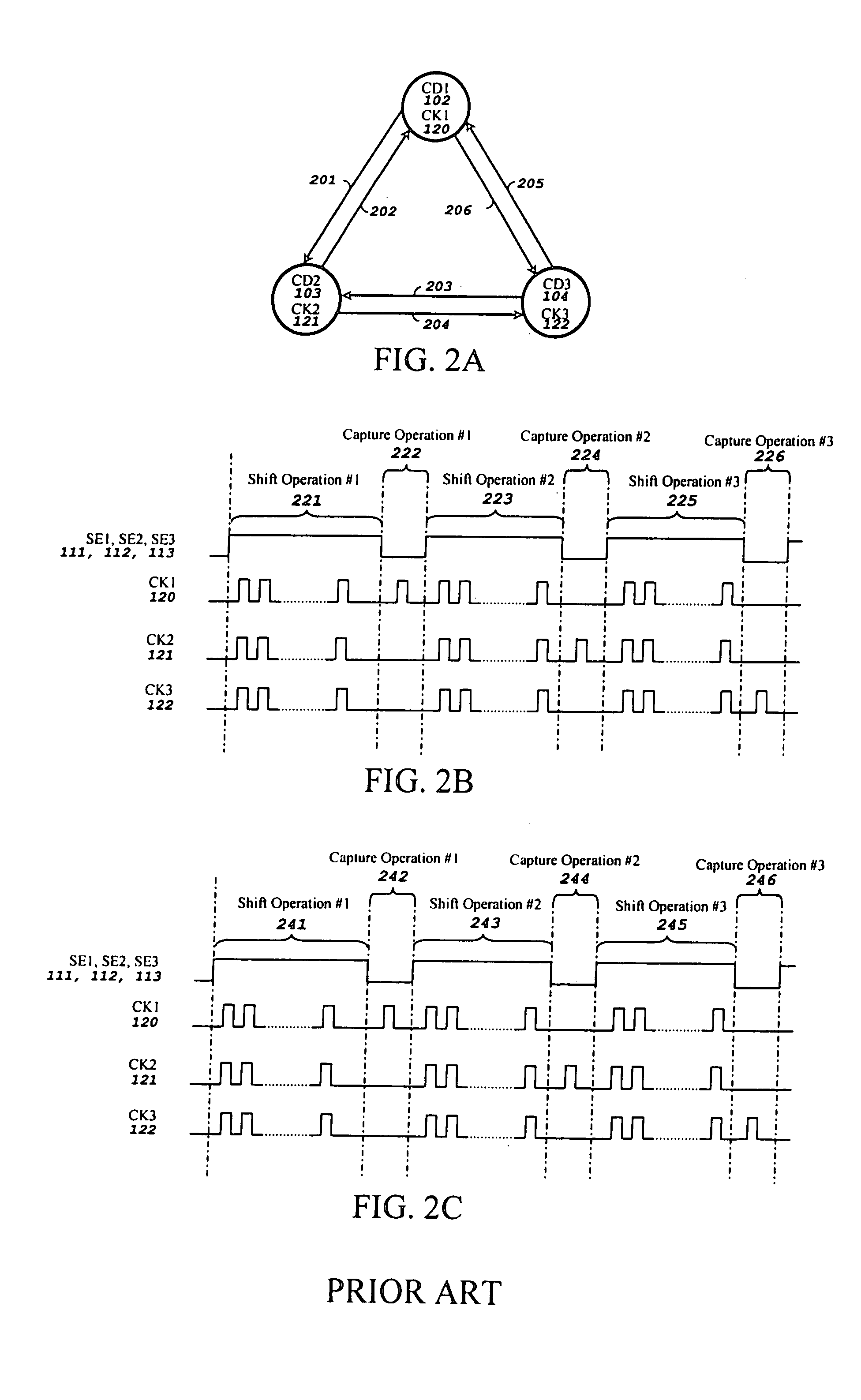Smart capture for ATPG (automatic test pattern generation) and fault simulation of scan-based integrated circuits
- Summary
- Abstract
- Description
- Claims
- Application Information
AI Technical Summary
Benefits of technology
Problems solved by technology
Method used
Image
Examples
first embodiment
[0120]FIG. 7A shows the domain-interconnect graph used to represent the relationship among the clock domains shown in FIG. 1, with clock grouping in the present invention. 3 nodes are used to represent the 3 clock domains, CD1102 to CD3104. The corresponding scan clocks, CK1120 to CK3122, are also shown in the nodes for easy comprehension. The directed edge between two nodes represents a cross-clock domain block. For example, the edge 701 represents the cross-clock domain block CCD12105 as shown in FIG. 1. In addition, there are two clock groups. One consists of two scan clocks, CK1120 and CK2121, as well as the corresponding clock domains, CD1102 and CD2103. The other consists of one scan clock CK3122 and its corresponding clock domain, CD3104.
[0121]FIG. 7B shows the scan clock waveforms in ATPG (automatic test pattern generation) and fault simulation and FIG. 7C shows the scan clock waveforms in actual test application, both for detecting or locating stuck-at faults, bridging faul...
second embodiment
[0125]FIG. 8A shows the domain-interconnect graph used to represent the relationship among the clock domains shown in FIG. 1, with clock grouping in the present invention. The meanings of nodes, edges, and clock groups are the same as explained in FIG. 7A.
[0126]FIG. 8B shows the scan clock waveforms in ATPG (automatic test pattern generation) and fault simulation and FIG. 8C shows the scan clock waveforms in actual test application, both for detecting or locating stuck-at faults, bridging faults, or IDDQ faults, (referred to as faults) with regard to clock grouping in a second embodiment of the present invention.
[0127] This embodiment requires that all scan clocks be grouped into a set of clock groups and that the clock groups be activated one by one in a selected order during each capture operation. In addition, the capture pulse delays between each clock group should be larger than the possible corresponding clock skew. Furthermore, if a clock group contains multiple scan clocks,...
third embodiment
[0130]FIG. 9A shows the domain-interconnect graph used to represent the relationship among the clock domains shown in FIG. 1, with clock grouping in the present invention. The meanings of nodes, edges, and clock groups are the same as explained in FIG. 7A.
[0131]FIG. 9B shows the scan clock waveforms in ATPG (automatic test pattern generation) and fault simulation and FIG. 9C shows the scan clock waveforms in actual test application, both for detecting or locating stuck-at faults, bridging faults, or IDDQ faults, (referred to as faults) with regard to clock grouping in a third embodiment of the present invention.
[0132] This embodiment requires that all scan clocks be grouped into a set of clock groups and that the clock groups be activated one by one in a selected order during each capture operation. In addition, the capture pulse delays between each clock group should be larger than the possible corresponding clock skew. Furthermore, if a clock group contains multiple scan clocks, ...
PUM
 Login to View More
Login to View More Abstract
Description
Claims
Application Information
 Login to View More
Login to View More - R&D
- Intellectual Property
- Life Sciences
- Materials
- Tech Scout
- Unparalleled Data Quality
- Higher Quality Content
- 60% Fewer Hallucinations
Browse by: Latest US Patents, China's latest patents, Technical Efficacy Thesaurus, Application Domain, Technology Topic, Popular Technical Reports.
© 2025 PatSnap. All rights reserved.Legal|Privacy policy|Modern Slavery Act Transparency Statement|Sitemap|About US| Contact US: help@patsnap.com



